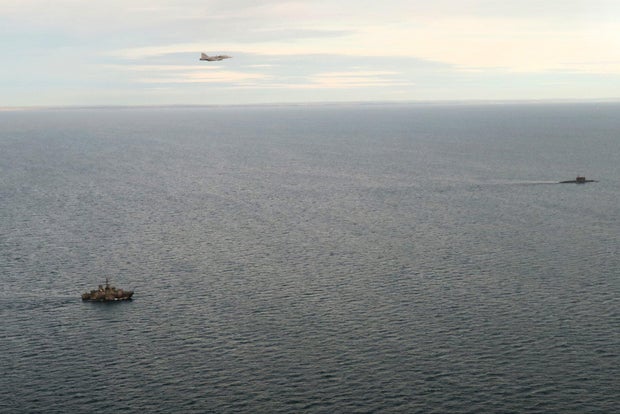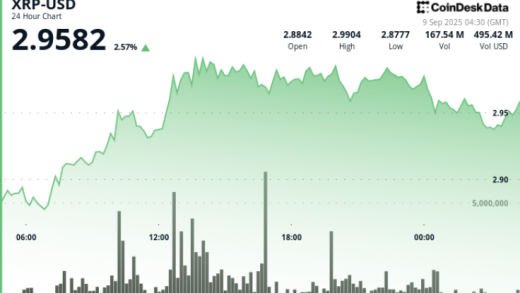Sweden’s armed forces said Wednesday they were following a Russian submarine that entered the Baltic Sea a day earlier, amid mounting tensions in the region.
“A Russian submarine entered the Baltic Sea yesterday via the Great Belt,” a Danish strait, the Swedish military said in a statement.
“The armed forces’ jet fighters and warships met up with the submarine in the Kattegatt (strait between Denmark and Sweden) and are now following it,” it said.
The Swedish navy, which released two images of the incident, said it was “a routine operation taking place in close collaboration with our allies,” adding that it had a “good overview of our immediate vicinity.”
Swedish Armed Forces
Tensions over the Baltic Sea have heightened since Russia’s full-scale invasion of Ukraine in 2022.
Swedish Prime Minister Ulf Kristersson said in January that Sweden was “not at war, but there is not peace either.”
The country dropped two centuries of military non-alliance to join NATO in 2024.
Kristersson said the entire Baltic Sea region was subjected to “hybrid attacks,” referring to disinformation and a series of incidents involving damaged underwater cables.
“The Russian threat is very likely long-term. As our defense must be,” he said.
Last year, Finnish special forces seized control of the Eagle S, a Russian shadow fleet oil tanker, after it dragged its anchor and severed critical undersea cables in the Baltic Sea. The maneuver — what would later be described as a “turning point” — was the first time Finnish forces had boarded and seized any foreign ship since World War II.
A seven-month long “60 Minutes” investigation revealed that the Eagle S incident was not an isolated case. Authorities suspect Russian aggression aimed at undersea infrastructure, prompting NATO to launch “Baltic Sentry,” deploying ships and planes to monitor the shadow fleet and safeguard critical seabed infrastructure.



